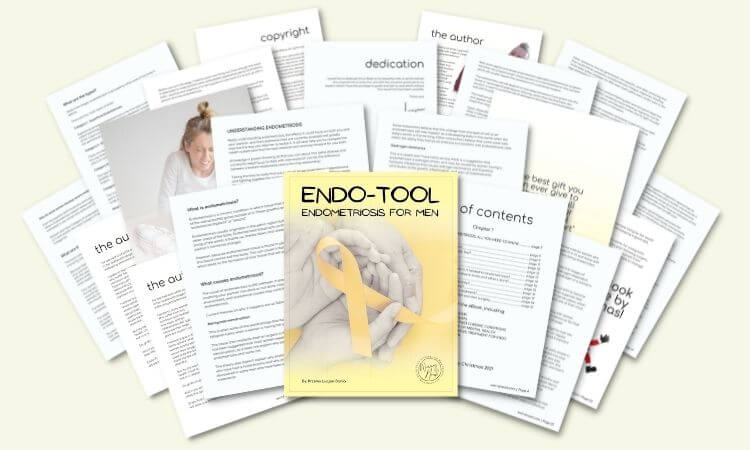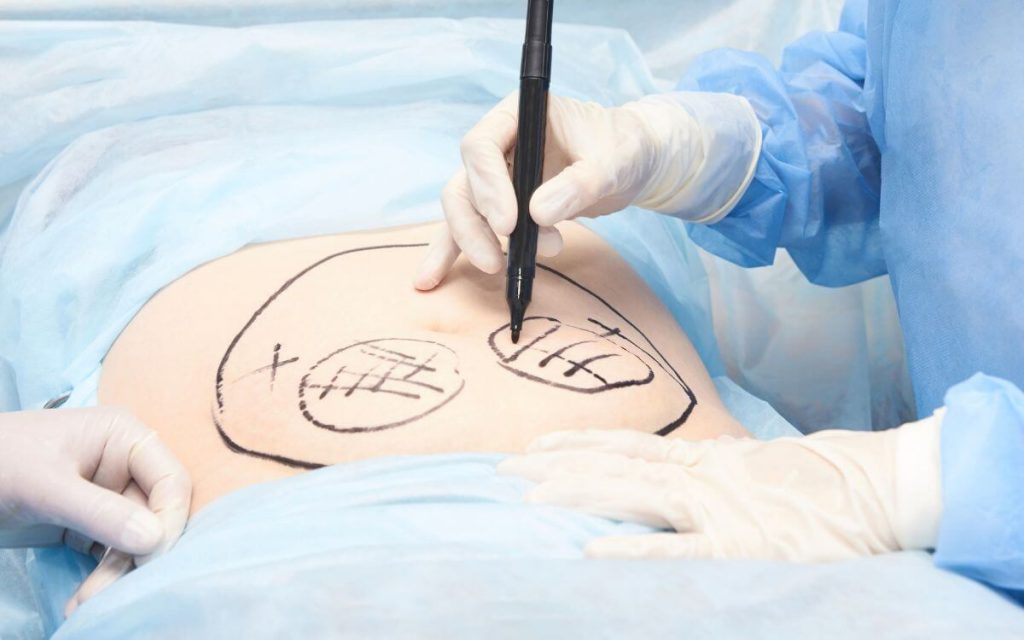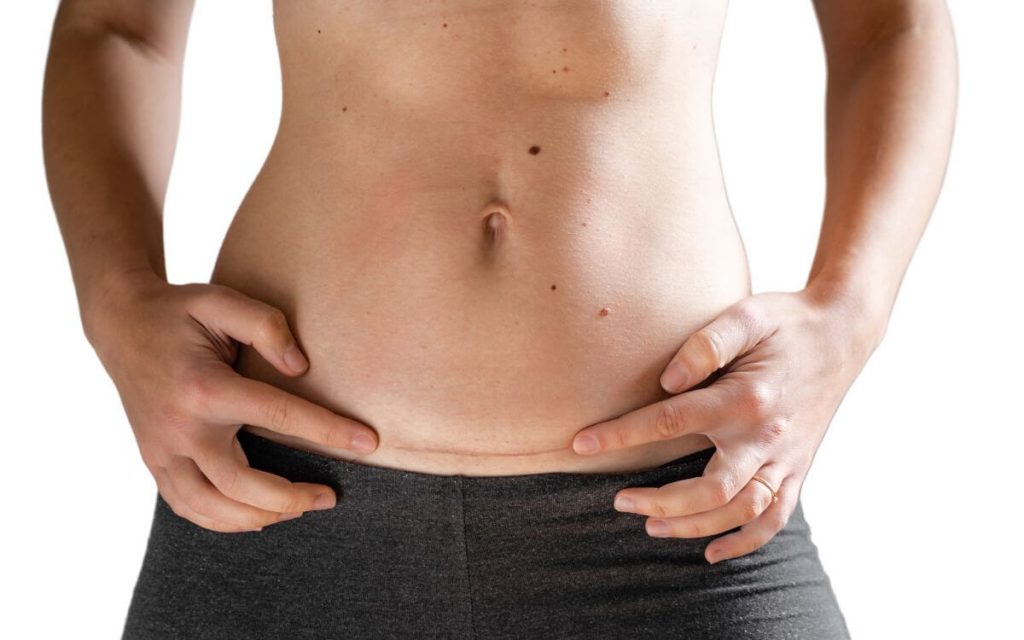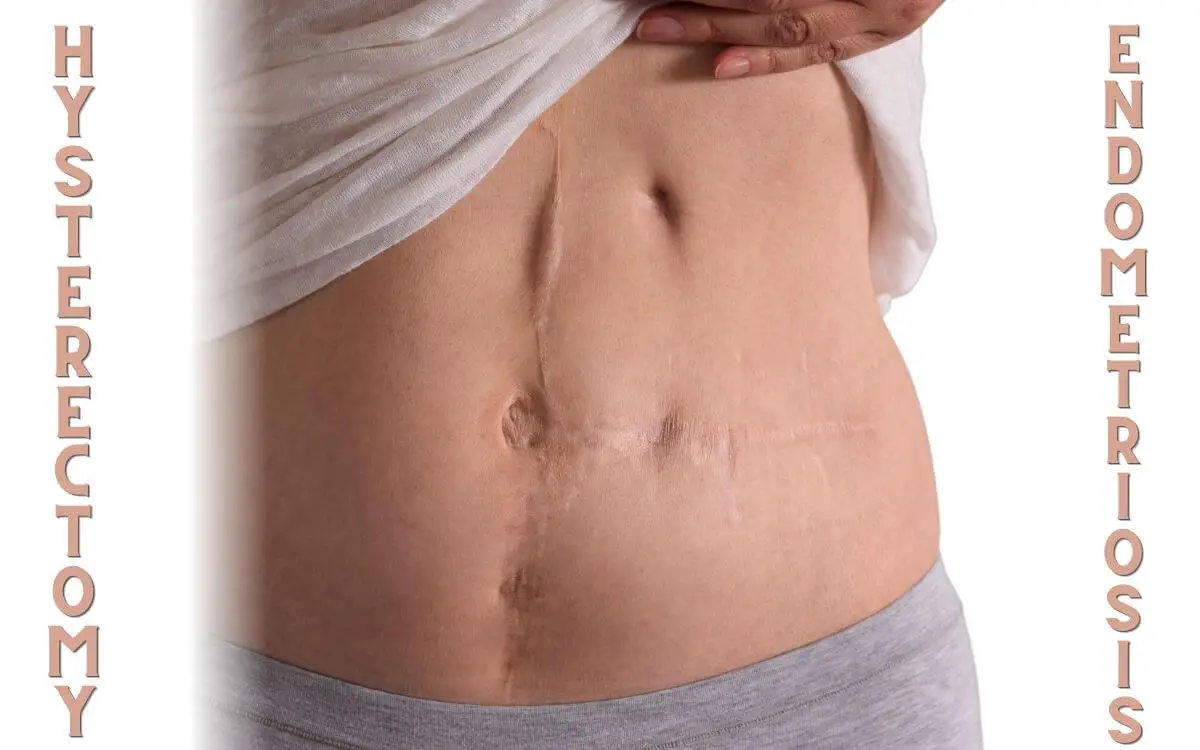What hysterectomy does to your body?
My wife asked me the other day how will her body after hysterectomy reacts, and should she consider having it done. I couldn’t answer her question, and she decided to google “what hysterectomy does to your body”.
Just to clarify, this article relates to endometriosis, so in terms of hysterectomy being the last resort in terms of endometriosis surgery, the answer to this question is simple:
How your body after hysterectomy react will depend on the type of hysterectomy, how your procedure will be performed, the type of endometriosis you have, your personal circumstances (wanting children or not), and various risk factors.
How can hysterectomy affect you?
The short answer is, it depends.
It depends because there are different types of hysterectomies. But there are also different ways of doing these hysterectomies, and you need to take a look at the benefits and risk factors.
There are 5 types of hysterectomy:
- A total hysterectomy removes the body of the uterus, including the cervix.
- A supracervical hysterectomy (subtotal, partial) removes the body of the uterus but leaves the cervix.
- Hysterectomy and bilateral salpingo-oophorectomy with the uterus, fallopian tubes, and ovaries removed.
- Hysterectomy with prophylactic bilateral salpingectomy removes the fallopian tubes at the time of hysterectomy (due to ovarian cancers originating in the tubes).
- A radical hysterectomy (most extensive) removes the body of the uterus, the cervix, and the ovaries as well as tissue on the left and right sides of the uterus. Lymph nodes may also be removed.
There are different ways of doing hysterectomy, including:
- A traditional or “open” hysterectomy is done through a large incision in the abdomen.
- A laparoscopic hysterectomy is done through small incisions in the abdomen. A laparoscope is a thin, lighted tube that helps the doctor see inside the body.
- A robotic-assisted laparoscopic hysterectomy is done with the help of a robot.
- A vaginal hysterectomy is done through an incision in the vaginal canal.
Let’s begin with the types of hysterectomy, and follow it up with the different ways hysterectomy can be performed.
Since this article relates to endometriosis, if you want to learn more about it, I wrote an “Endo-Tool, Endometriosis for Men” e-Book.
You can get the 1st Chapter of the e-Book for FREE, and if you like it, you’ll get a Whopping 33% Discount on the Whole Book, plus discounts on other helpful tools. You have nothing to lose but a lot to gain!
The first chapter alone contains all the comprehensive medical knowledge about endometriosis, including:
- What is endometriosis?
- What are the symptoms?
- What causes endometriosis?
- What does endometriosis look like?
- What are the stages?
- What are the types?
- What is adenomyosis and how is it related to endometriosis?
- Why do some women develop severe endo and others don’t?
- Does endometriosis cause infertility?
- How is endometriosis diagnosed?
- Do types and stages affect the treatment?
- Recurrence of endometriosis after excision surgery.
FREE Chapter of “Endo-Tool”
Endometriosis e-Book for Men

Total hysterectomy.
Total hysterectomy is the removal of the body of the uterus, including the cervix. The ovaries and fallopian tubes may or may not be removed.
If the ovaries are removed, it’s called an oophorectomy. If the fallopian tubes are removed, it’s called a salpingo-oophorectomy.
A total hysterectomy is usually done to treat:
- Cancer of the uterus, cervix, or ovaries
- Severe uterine prolapse
- Chronic pelvic pain that doesn’t respond to other treatments
- Endometriosis that comes back after treatment
- Fibroids that are large and cause severe symptoms, such as heavy bleeding or pain
- Uterine bleeding that is not normal
A total hysterectomy may also be done to prevent cancer, such as if you have a family history of ovarian or breast cancer.
Total hysterectomy is major surgery. It takes about 6 to 8 weeks to recover. You will likely have some vaginal discharge for up to 6 weeks. You may also have bloating, gas, and constipation for a short time after surgery. These problems usually go away within a few days.
You will likely stay in the hospital for 3 to 5 days after surgery. You may need pain medicine for a week or two after you go home. Most women feel well enough to return to their usual activities within 4 to 6 weeks.
Supracervical hysterectomy.
Supracervical hysterectomy on the other hand is the removal of the body of the uterus but leaves the cervix. The ovaries and fallopian tubes may or may not be removed.
In this partial (or subtotal) hysterectomy, the uterus is removed, but the cervix is left in place. But even though the removal of the cervix is usually advised because it’s a potential cancer site, some women feel otherwise.
If the cervix is kept, regular cervical screening is still necessary.
The size of the incision during the supracervical hysterectomy is determined by the size of the uterus and the abdominal exposure needed. The incision will either be vertical or horizontal.
Partial hysterectomy takes on average from 45 to 90 minutes and requires either spinal or general anesthesia. The surgery for endometriosis is performed in a hospital, with patients staying for two to three days following the hysterectomy.
Patients usually return to work in 4-6 weeks after the procedure.
Hysterectomy and bilateral salpingo-oophorectomy.
The uterus, fallopian tubes, and ovaries are removed during hysterectomy and bilateral salpingo-oophorectomy. This type of hysterectomy is performed in women who have cancer of the ovaries or the uterus, or because of chronic pain related to pelvic infection or endometriosis.
During this type of hysterectomy, 3 or 5 tiny incisions are made in the abdomen. Gas is put into the abdomen to inflate it and make it easy to access.
A very small telescope is inserted in one of the incisions through which the surgeon can see inside.
Long and narrow instruments are inserted through these tiny incisions to detach the uterus, fallopian tubes, ovaries, and cervix. These tissues are removed through the vaginal canal and the top is closed with stitches that will dissolve over time.
After that, the gas is released.
Hysterectomy with prophylactic bilateral salpingectomy.
Hysterectomy with prophylactic bilateral salpingectomy is the removal of the uterus and fallopian tubes. The ovaries may often be removed to reduce the risk of ovarian and breast cancer in the future.
The fallopian tubes are removed to prevent ovarian cancer, therefore this procedure is also called “tubal ligation”, which is a form of contraception.
This type of hysterectomy is often done laparoscopically, which is a minimally invasive surgery.
The surgeon will make small incisions in the abdomen and insert a laparoscope, which is a thin, long telescope with a light attached.
The surgeon will then remove the uterus and fallopian tubes through these small incisions.
This type, like any other type of hysterectomy, is major surgery with some risks. The overall risks of a hysterectomy include:
- Anesthesia risks
- Bleeding during or after surgery
- Blood clots
- Infection
- Injury to surrounding organs
- Reaction to medication
- Scarring
- Uterine rupture
Radical hysterectomy.
Radical means “total” and in this case it means the removal of the uterus, ovaries, fallopian tubes, surrounding tissue, lymph nodes (lymph glands), fatty tissue, and sometimes even the upper part of the vaginal canal.
A radical hysterectomy is usually done to treat cancer. It can be used to treat cervical, uterine, or ovarian cancer.
Radical hysterectomy is the most extensive version of the operation. This type is performed if the woman has cancer of the cervix, ovaries, fallopian tubes, or uterus.
After knowing all the types of hysterectomies it is time to expand more about the different ways hysterectomies can be performed.

Traditional hysterectomy.
Traditional hysterectomy is the most common type of hysterectomy performed in the United States. It is also called an “open” or “abdominal” hysterectomy.
In this type, the surgeon will make a 5 to 7-inch incision in the lower abdomen to remove the uterus. The incision can be either vertical (down the center of the abdomen) or horizontal (along the bikini line).
The surgeon will then detach the uterus from the ovaries, fallopian tubes, and upper part of the vaginal canal. The cervix is also removed. The tissues are then removed through the incision.
After that, the incision is closed with stitches or staples.
Laparoscopic hysterectomy.
Laparoscopic hysterectomy is a minimally invasive type of surgery. It is also called “band-aid” surgery because only small incisions are made.
This type of hysterectomy is often used to treat fibroids, endometriosis, and even pelvic organ prolapse.
The surgeon will make 3 to 4 tiny incisions in the abdomen. A laparoscope, which is a thin telescope with a light attached, is inserted in one of the incisions.
Robotic-assisted hysterectomy.
Robotic-assisted hysterectomy is a minimally invasive type of surgery. It is similar to a laparoscopic hysterectomy but the surgeon will be seated at a computer console and will use joysticks to control the surgical instruments.
The surgeon will also make 3 to 4 tiny incisions in the abdomen. A camera is inserted in one of the incisions. The surgeon will then control the surgical instruments to remove the uterus.
Vaginal hysterectomy.
Lastly, vaginal hysterectomy is a minimally invasive type of surgery. In this type, the surgeon will make an incision in the upper part of the vaginal canal.
The surgeon will then detach the uterus from the ovaries, fallopian tubes, and upper part of the vaginal canal. The cervix is also removed. The tissues are then removed through the incision in the vaginal canal.
Now that we know the different types of hysterectomies, let’s move on and discuss the body after a hysterectomy.

The body after a hysterectomy.
After a hysterectomy, the body goes through some changes.
For starters, the body no longer menstruates. This means that the levels of the hormone estrogen will go down. As a result, there may be some side effects such as:
- Hot flashes
- Vaginal dryness
- Mood swings
- Weight gain
- Insomnia
- Fatigue
There are also some physical changes such as:
The body’s shape may change. This is because the uterus is a muscle and when it is removed, the surrounding muscles may weaken. This can cause the belly to protrude more.
There may be some incontinence issues. This is because the removal of the uterus can weaken the pelvic floor muscles. These are the muscles that support the bladder and help to control urination.
The sex life may change. This is because the removal of the uterus can affect a woman’s sexual response. The loss of estrogen can also lead to vaginal dryness which can make sexual intimacy painful.
The factors to consider before having a hysterectomy.
As you can see, there are many different factors that can affect how your body will react to having a hysterectomy.
Some of the common side effects of a hysterectomy include:
- Pain
- Soreness
- Bleeding
- Infection
- Fatigue
- Constipation
- Diarrhea
- Nausea and vomiting
- Urinary incontinence or retention
- Pain during intimate times, or loss of interest.
- Chronic pain
- Depression
- Anxiety
- Sleep problems
- Urinary incontinence
- Sexual dysfunction
- Bowel problems
These side effects are usually temporary and will go away within a few weeks or months. However, some women may experience longer-term side effects, such as:
If you are having any of these side effects, be sure to talk to your doctor. There are many treatments that can help.
Hysterectomy is major surgery, and it is important to discuss all of the risks and benefits with your doctor before making a decision. Once you have made the decision to have a hysterectomy, it is important to find a surgeon that you trust and feel comfortable with.
If you have any questions about what a hysterectomy does to your body, be sure to ask your doctor. They will be able to give you the most accurate information based on your individual situation.
FREE Chapter of “Endo-Tool”
Endometriosis e-Book for Men

Conclusion.
In conclusion, a hysterectomy is a surgery that removes the uterus. It is often done to treat cancer or other conditions such as fibroids, endometriosis, and pelvic organ prolapse.
After a hysterectomy, the body goes through some changes. These include changes in hormone levels, body shape, incontinence, and sex life. It is important to discuss these changes with your doctor so that you can be prepared for them.
No matter what type of hysterectomy is performed, the body will go through some changes. For example, estrogen is produced in the ovaries, and when they are removed, there will be a decrease in this hormone. This can cause menopausal symptoms such as hot flashes, vaginal dryness, and mood swings.
Some women also experience depression after a hysterectomy. This may be due to the hormonal changes that occur or the loss of the ability to bear children.
If you are considering a hysterectomy, be sure to discuss all of your concerns with your doctor. He or she can help you decide if it is the right choice for you.
I hope this helps!


About Me
Hi, I’m Lucjan! The reason why I decided to create this blog was my beautiful wife, who experienced a lot of pain in life, but also the lack of information about endometriosis and fibromyalgia for men…
